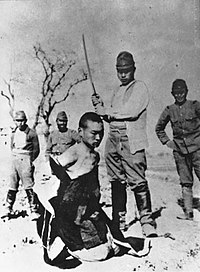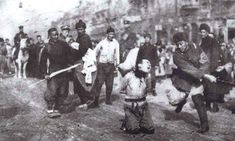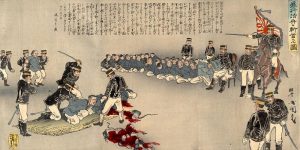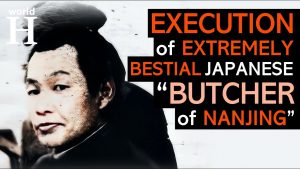In Nanjing, the Japanese soldiers commit unspeakable atrocities and engage in a campaign of mass killing which over the course of two months will claim the lives of as many as 300,000 civilians and numerous unarmed Chinese soldiers.
VIDEO: EXECUTION of Gunkichi Tanaka – Japanese Soldier who BEHEADED 300 People during the Nanjing MASSACRE
Execution of Gunkichi Tanaka Japanese Soldier who Beheaded 300 People during the Nanjing Massacre. 18 September 1931. Japan, seeking raw materials to fuel its growing industries, invades Manchuria – an industrial area located in Northeastern China known for its rich mineral and coal reserves.
In the following years, there will be various “incidents”, or armed clashes of a limited nature between the Empire of the Rising Sun and the Republic of China but full-scale war will not break out between the two countries until the Marco Polo Bridge Incident on 7 July 1937.
This marks the beginning of the Second Sino-Japanese War that will end only with Japan’s surrender on 2 September 1945.
During this war, which is the prelude to the Pacific side of World War II, the Japanese army scores major victories, capturing Beijing and Shanghai and in December of 1937, the Japanese military invades Nanjing, then China’s capital.
In Nanjing, the Japanese soldiers commit unspeakable atrocities and engage in a campaign of mass killing which over the course of two months will claim the lives of as many as 300,000 civilians and numerous unarmed Chinese soldiers.
One of the men responsible for these atrocities is a Japanese Army captain Gunkichi Tanaka. Gunkichi Tanaka was born on 19 March 1905 in Tokyo, Japan. After attending military preparatory schools, Tanaka graduated from the Imperial Japanese Army Academy which was the principal officer’s training school for the Imperial Japanese Army.
The training curriculum included college-level general education courses, traditional martial arts and horsemanship.
After completing the two-year junior portion of training at Asaka in Saitama, cadets were assigned for eight months to infantry regiments to become familiar with Army weaponry and platoon leadership skills before resuming studies in the 1-year, 8-month senior program at Sagamihara in Kanagawa.
Upon graduation, cadets became apprentice officers with the grade of sergeant-major (but who were treated as officers), and after the successful completion of four months probation in their assigned regiments, were formally commissioned as second lieutenants.
Conflict in Asia between Japan and China began with the Invasion of Manchuria, well before the official start of World War II.
&&&
[Editor’s note: The 21st Century compiled below the above article-related photos which further expose, reveal, and uncover (the still-hidden / unknown-to-many in the world) “collective inhumanity, insanity, and sociopathy of the Japanese imperialists” during Nanjing Massacre (aka, “Rape of Nanjing”) and other war crimes-related photos since its invasion of China in 1937]




















Japanese soldier holding a rifle with bayonet fixed. Copyright: © IWM. Original Source: http://www.iwm.org.uk/collections/item/object/24259



Republished by The 21st Century
The views expressed in this article are solely those of the author and do not necessarily reflect the opinions of 21cir.com.

